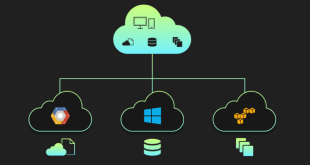In recent years, the cloud computing landscape has witnessed exponential growth, becoming the cornerstone of modern business operations. However, this rapid advancement has also brought forth unprecedented cybersecurity challenges. As cyber threats evolve, traditional security measures are proving inadequate to safeguard sensitive data and resources stored in the cloud. In response, a new paradigm has emerged – the Zero Trust security framework. In this blog, we delve into the various aspects of this groundbreaking approach, exploring how it addresses the vulnerabilities of cloud computing and enhances data protection.
The Evolution of Cloud Security
The migration to cloud infrastructure has revolutionized the way businesses operate. As organizations embrace the scalability and flexibility of cloud computing, security concerns have intensified. The traditional perimeter-based security approach, once considered sufficient, is no longer effective in defending against sophisticated cyberattacks. This realization has led to the development of the Zero Trust model.
Understanding Zero Trust Security
The Zero Trust security model operates on the principle of “never trust, always verify.” Unlike conventional security architectures that assume everything within the network is trustworthy once inside, Zero Trust assumes nothing can be trusted. It validates each access request, regardless of its origin, and continuously monitors user behavior to detect anomalies that may indicate potential threats.
Key Components of Zero Trust Framework
Multi-Factor Authentication (MFA)
MFA is a fundamental element of the Zero Trust approach, requiring users to provide multiple forms of identification before accessing resources. This additional layer of security fortifies cloud data protection against unauthorized access.
Microsegmentation
Microsegmentation involves dividing the network into smaller, isolated segments to minimize the impact of a potential breach. By limiting lateral movement within the network, it prevents attackers from gaining widespread control even if they infiltrate a specific segment.
Continuous Monitoring and Analytics
Real-time monitoring and advanced analytics enable organizations to detect anomalous behavior promptly. Continuous monitoring ensures that any potential threat is identified and addressed before it escalates.
Types of Zero Trust Architecture
Identity-Based Zero Trust
This type of Zero Trust architecture focuses on user identity verification as the primary factor for granting access to resources. User identity is authenticated and authorized based on various parameters, such as location, device, and role.
Device-Based Zero Trust
In this architecture, the security model relies on verifying the integrity and security posture of devices attempting to access the cloud environment. It ensures that only trusted and compliant devices are granted access.
Application-Based Zero Trust
Application-based Zero Trust emphasizes securing individual applications rather than the entire network. It assesses the application’s trustworthiness and grants access accordingly.
Implementing Zero Trust in Cloud Environments
Transitioning to a Zero Trust security framework requires careful planning and execution. Here are the key steps to implement Zero Trust in cloud environments:
- Conduct a comprehensive risk assessment to identify potential vulnerabilities.
- Define access controls and permissions based on the principle of least privilege.
- Integrate multi-factor authentication for enhanced user identity verification.
- Implement microsegmentation to compartmentalize the network and limit lateral movement.
- Deploy advanced monitoring and analytics tools to detect and respond to anomalies.
Benefits of Zero Trust Security in Cloud Computing
- Heightened Data Protection: Zero Trust minimizes the risk of data breaches by verifying every access request and monitoring user behavior.
- Improved Compliance: Zero Trust architecture aligns with stringent regulatory requirements, ensuring organizations meet compliance standards.
- Reduced Attack Surface: Microsegmentation and strong authentication mechanisms reduce the attack surface, making it harder for cybercriminals to exploit vulnerabilities.
- Enhanced User Experience: While Zero Trust strengthens security, it doesn’t compromise user experience, providing seamless access to authorized users.
Final Words
In the post-2021 era, where cyber threats continue to evolve, traditional security measures fall short in protecting cloud data and resources. Embracing the Zero Trust security framework empowers organizations to fortify their cloud environments against potential breaches, safeguarding sensitive data and preserving business continuity.
Commonly Asked Questions:
1. Is Zero Trust applicable only to cloud environments?
No, while Zero Trust is well-suited for securing cloud infrastructures, its principles can be applied to various network environments, including on-premises and hybrid setups.
2. Does Zero Trust hinder productivity?
Contrary to common misconceptions, Zero Trust enhances productivity by providing secure remote access and seamless authorization, ultimately reducing security-related disruptions.
3. Is Zero Trust suitable for small businesses?
Absolutely! Zero Trust is scalable and can be tailored to suit the needs of businesses of all sizes. Small businesses can benefit from its robust security features without overburdening their resources.
4. Can Zero Trust prevent insider threats?
While Zero Trust minimizes insider threats by verifying user identity and monitoring behavior, it is essential to complement it with strict access controls and employee training to address insider risks comprehensively.
5. How can an organization transition to Zero Trust?
The transition to Zero Trust requires careful planning, involving risk assessment, access control definition, and advanced security tool implementation. Engaging cybersecurity experts can streamline the process and ensure a successful adoption.
 webfily
webfily



